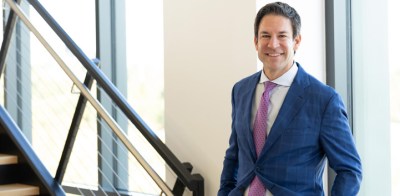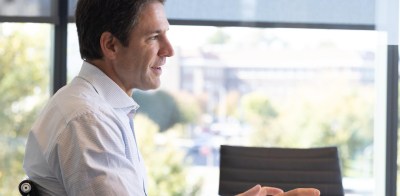I have spent more time than usual reviewing client asset allocations over the past several months. As I’ve done so, I’ve increasingly run into the same investor concern about deploying cash: that the current market environment reminds them of the run-up to the Global Financial Crisis (GFC) from earlier in their careers.
Now, the run-up to the GFC was probably one of the worst times to deploy cash into anything other than U.S. Treasuries. However, today’s economic backdrop is on much firmer footing than in the lead-up to the GFC—when the U.S. consumer, housing market and banking system were considerably more fragile and highly levered than they are today. Once the U.S. housing bubble began to implode, it was just a question of which other dominoes would fall and how much government intervention it would take to arrest the capital market and economic calamity.
But the fact of the matter is that fearing a repeat of the GFC because certain aspects of the current economic and market environment seem too good to be true is a suboptimal reason to refuse to consider putting cash to work in alternative strategies that have the potential to meaningfully increase income and total return without taking uncomfortable levels of risk.
We will discuss the meaningful differences between today’s U.S. consumer, housing market and banking system versus those of the lead-up to the GFC later in this strategy note. But first let’s address what I think is really going on with these investor concerns. To some allocators (and for certain markets and strategies), the current market environment seems too good to be true.
Public equities: Exciting gains but worrying concentration
On the surface, equity market returns (particularly since October 2022) have indeed appeared to be too good to be true.
I doubt anyone is more surprised than me that, despite current conditions (i.e., the Fed keeping rates higher for longer in an effort to fight inflation and continuing to shrink their balance sheet at an aggressive pace, as well as money supply contracting relative to nominal gross domestic product (GDP) for almost 2.5 years), equity multiples have re-expanded from 15.75X next 12 months earnings back to a recent high of 21X next 12 months earnings—which is only 0.2 turns cheaper than the end of 2021. So, after the most rapid tightening1 of monetary policy in decades, equity markets were recently only 1% cheaper? Wow.
Additionally, there is ample data that addresses how narrow the recent market gains have been—and how dependent they continue to be on a handful of expensive mega cap tech companies. Some highlights include:
- Magnificent Seven ruling market cap: 31% of the S&P 500’s market cap is the Magnificent Seven (minus Tesla and plus Eli Lilly) and the weighted average forward price-to-earnings (P/E) ratio of these seven companies is 33.8!
- Hyper concentrated equity markets: The S&P 500 is the most concentrated it has been since 1964. Case in point, just the combination of Nvidia (NVDA), Amazon (AMZN), META and Google (GOOG) have generated 55% of the year-to-date (YTD) return in the S&P 500.
When the bogeyman of idiosyncratic risk—the biggest problem with hyper concentrated equity markets—finally arrived with Tesla’s (TSLA’s) recent market cap decline and Apple’s (AAPL’s) substandard performance (well, being flat on the year is unusual for AAPL), the response has been, “Hey, don’t worry about it, here comes NVDA, the greatest wealth-generating machine in the shortest time period in the history of capital markets to more than make up for it. And you’ve received the additional benefit of a whole new class of health care treatments in the form of obesity treatment.”
The beat goes on, with continued equity market gains and multiple expansion.
Listed equities: Fewer choices for growth
However, to be fair, we have been in a winner-take-all economy and market environment for listed equities for quite some time, and the biggest beneficiaries have been U.S. mega cap tech, with the Magnificent Seven (minus Tesla) having historically unprecedented free cash flow generation and free cash flow margins. And in the case of NVDA, we are seeing the most rapid and powerful transition from a scalable investment idea (AI) to mind-blowing revenue and earnings growth. Similarly, Lilly is monetizing one of the largest secular challenges in U.S. healthcare (an overweight, aging population) in near record time at scale.
When you have fewer and fewer choices for growth in listed equities (since one of the mega trends in capital markets is an increasing amount of economic might and growth staying private, or being taken private) and the best stock-to-flow ratio of any asset on the planet (over 2% of listed equity market cap in the S&P 500 is on pace to be bought back with de minimis large scale issuance), perhaps a 21X forward multiple at this level of market concentration isn’t as egregious as it appears to those of us who have studied market history at length.
Private credit: Not too good to be true…just true
I also get how, if you’ve been invested in private credit for a while and are looking to allocate more capital, the current market environment could seem to be too good to be true. That is why, when we began to discuss how the opportunity set for private credit was continuing to evolve favorably, I originally called this optimal economic environment the Dare to Dream scenario.
However, it’s very hard to argue that, in the case of private credit, what seems too good to be true is anything but just…simply factually true.
Since the end of 2021, my biggest dream for our private lending strategies has been that the Fed would hike as much as possible and keep rates as high as possible—for as long as possible—without cratering the U.S. economy, and here we are. This has generated (and will continue to generate) more income and total return, without the recession-driven hangover of higher defaults and loan losses that would mean investors have to give back at least some portion of that excess income. This comes with the added benefit of lower leverage and higher debt service coverage ratios in private loans originated from the early fall of 2022 through today. And that means potentially less risk.
More return with less risk, it’s almost like an Old Milwaukee commercial!
Additionally, due to a round of recent bank failures and heightened bank regulatory scrutiny, private lenders continue to benefit from the stagnating loan growth in the banking system that has been accumulating since Q2 of last year—despite booming nominal GDP growth, as well as select opportunities to purchase seasoned, high quality loans at discounts directly from banks (which is something I never thought we’d see again).
Now, it certainly isn’t all peaches and cream—the credit metrics of late 2020, 2021 and early 2022 vintage corporate loans originated at record high LTVs, debt/EBITDA ratios and tight spreads have in some cases led to suboptimal debt service coverage ratios.
However, other than a few problem areas—north of 5% nominal GDP growth tends to cure all ills since, over time, EBITDA and cash flow can be grown out of the debt service problem. Additionally, even though income/total return is up a lot and leverage ratios are down, I would love to tell you that spreads are still as wide as they were 20 months ago. But, alas, private market spreads typically follow public market spreads with a lag, and public market spreads have come in by around 200bps since late 2022 with private market spreads tightening as well.
In the next strategy note, we will go into much more detail on the current private lending environment to address the ongoing evolution of credit supply versus credit demand—as well as where pricing is today versus recent and longer term history.
Challenges persist in some strategies
If investors need any more evidence that concerns about an over-optimistic environment are likely misplaced, there remain many areas of capital markets where conditions are far from too good to be true. In fact, in some cases the environment has been downright awful.
- Fixed income/bond investing: It had a great 40-year run, but that run has been over for a while now. Five years of tons of volatility, huge mark-to-market losses in 2022, and no gains to speak of certainly isn’t too good to be true.
- Office towers: Owning and operating office towers in geographically challenged locations has also been far from too good to be true since the pandemic upended employee routines.
- Shorting equity: Shorting pretty much any class of equity (but particularly growth equity) has been a trainwreck for quite some time.
- International and emerging market equities: Being a believer in international and emerging market equities (based on the outperformance delivered in the Lost Decade) has been frustrating to say the least.
- Passive exposure: Investing in a passive long equal weight/short market cap weighted exposure has been a challenge in almost every economic and market environment for the past 10 years.
Misplaced concerns about “GFC Part II”
Now, let’s turn our attention back to that original concern—that the current economic/market environment reminds some investors of the run-up to the GFC. To make a long story short, hanging out in cash to avoid losses driven by GFC Part II is not the greatest strategy.
Investors should always be concerned about risk of loss and liquidity, and as discussed in prior strategy notes, the biggest risks today would be a liquidity accident in the U.S. Treasury market driven by continued quantitative tightening and unlimited future Treasury supply (as well as an unpredictable exogenous shock).
But hanging out in cash because you think the probability of a GFC repeat is 25% makes no sense at all. If you need convincing, just compare key indicators between the lead-up to 2008 and conditions today.
| Comparing the GFC lead-up to today | Q4 2007 | Q4 2023 |
| U.S. consumer debt to GDP | 102.5% | 73.4% |
|
U.S. consumer debt to DPI (disposable personal income) | 137.3% | 100% |
| Mortgage debt to DPI | 100.4% | 63.6% |
| Aggregate home mortgage LTV | 46.1% | 29.0% |
| U.S. consumer Financial Obligation Ratio (FOR) | 18.2% | 14.2% |
| U.S. banking system Tier I capital2 | 8.25% | 13.7% |
| U.S. banking system total reserves | $43.5 billion | $3429.5 billion |
Source: Federal Reserve Economic Data (FRED) and Federal Reserve Bank of New York.
From the data above, you can see that the U.S. consumer, housing market and banking system are in profoundly better shape than they were prior to the GFC. And this data snapshot doesn’t even get into the numerous improvements in credit underwriting standards for both consumer, commercial real estate and corporate credit—which have been profound as well. Nor does it address the continued dearth of single-family housing supply versus pent up demand.
Conclusion: The Time for the Right Alts Is Still Now!
Yes, sometimes things are too good to be true, but other times they are just true (and in other asset classes and strategies, conditions have at times appeared too bad to be true!) Either way, allocators refusing to consider strategies that could meaningfully increase income and total return without taking uncomfortable levels of risk because they fear a repeat of the GFC makes very little sense indeed.
Investing in alternatives is different than investing in traditional investments such as stocks and bonds. Alternatives tend to be illiquid and highly specialized. In the context of alternative investments, higher returns may be accompanied by increased risk and, like any investment, the possibility of an investment loss. Investments made in alternatives may be less liquid and harder to value than investments made in large, publicly traded corporations. When building a portfolio that includes alternative investments, financial professionals and their investors should first consider an individual’s financial objectives. Investment constraints such as risk tolerance, liquidity needs and investment time horizon should be determined.




